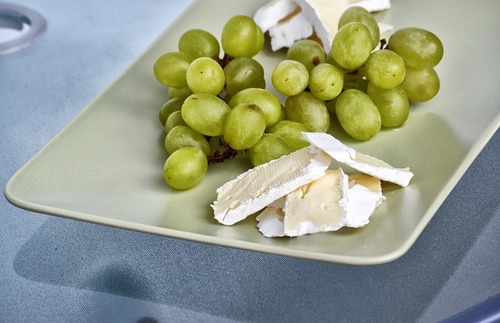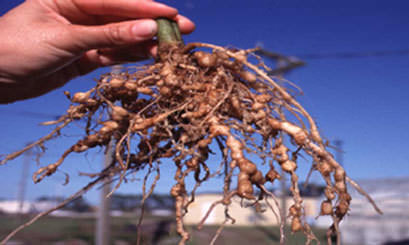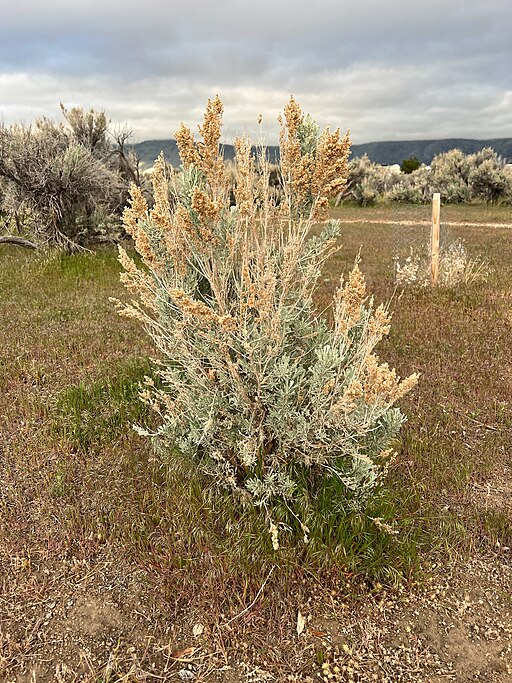13.67 植物保护对策 -- -- 先进
章节大纲
-
Protective Responses: Dormancy and Resistance
::保护性对策:收容和抵抗Preparing for Seasonal Change
::准备季节变化and from hummingbirds to whales avoid unfavorable environmental conditions by migrating. Plants, of course, cannot migrate – despite their surprising repertoire of movements . However, dormancy – a period of suspended growth and – can save energy or protect them from freezing or desiccation. Like for animals, dormancy is a survival strategy that allows plants to colonize regions where the climate allows growth for only part of the year. If unfavorable conditions are fairly predictable, as for winter temperatures, plants can prepare in advance. Decreases in photoperiod, temperature, and/or rainfall may trigger dormancy. As discussed in the concepts on plant , (ABA) induces - and gibberellins break – dormancy in buds and seeds .
::从蜂鸟到鲸鱼,通过迁移避免了不利的环境条件。 当然,植物不能迁移 — — 尽管它们的迁移数量惊人。 然而,宿舍 — — 暂时停止增长的时期以及 — — 能够节省能源或保护它们免受冷冻或干燥。 与动物一样,宿舍是一种生存策略,允许植物将气候只允许一年中部分时间增长的地区殖民化。 如果不利条件可以预测,就像冬季温度一样,植物可以提前做好准备。 光期、温度和(或)降雨量的下降可能会触发宿舍。 正如植物概念所讨论 , ( ABA) 诱发 — — 和胡贝利因断裂 — — 植物和树苗和种子中的宿舍。Dormancy in woody plants usually involves loss of leaves. Reabsorption of valuable nutrients usually precedes leaf fall; you can see the effects of chlorophyll breakdown, for example, in the yellow and orange pigments revealed as it disappears. Trees often store excess sugars produced over the growing season in ; in spring, the sap rises to fuel new leaves and flowers . We tap maple and yellow birch trees to intercept this sap to make syrup and candy.
::木质植物的富饶通常涉及叶子的流失。在叶子倒下之前,通常会重新吸收宝贵的营养物质;例如,在黄色和橙色色素消失时,可以看到叶绿素破裂的影响。树木常常储存生长季节(......)产生的多余的糖;在春天,树苗会升起为新的叶子和花朵的燃料。我们开动了木瓜和黄色树枝来拦截这棵树,以制造糖浆和糖果。Herbaceous perennial plants over-winter as roots, with enough stored food to fuel spring re-growth. Annual plants have dormant seeds; often these require a period of cold, moisture, and/or mechanical distress - or even passage through a particular bird’s – in order to germinate. Biennial plants use both strategies, over-wintering for a single season as roots, and then producing seed for the following winter.
::热生常年植物作为根部生长,并有足够的储存食物来刺激春季的再生长。 年生植物有休眠种子;这些植物往往需要一段时间的寒冷、湿度和/或机械压力 — — 甚至需要经过某个特定的鸟类 — — 才能发芽。 两年一度的植物使用两种策略,将一个季节的过冬作为根部,然后为下一冬天生产种子。Vegetable gardeners know that plants may be annuals (pea, left), biennials (carrot, center), or perennials (asparagus, right). Annuals over-winter as seeds, which must be replanted each year. Biennials do not flower until the second year, storing the energy to produce them in roots, which we intercept for their food value. Herbaceous perennials over-winter as roots; each spring, we harvest the new growth in stems (but sparingly, if we want to keep the plant from year to year Defending Against Disease and Herbivory
::防疾病和抗草药Humans and other animals have powerful immune systems to respond to disease, and plants have similar systems. Like humans, plants are susceptible to infection by , , , , , and ( Figure ). Many disease organisms interfere with or exploit host plant physiology ; for example, the crown gall bacterium raises levels, causing the formation of tumors on the roots it infects.
::人类和其他动物有强大的免疫系统来应对疾病,植物也有相似的免疫系统。 和人类一样,植物也易受植物感染。 许多疾病有机体干扰或利用宿主植物生理学;例如,冠子子菌的浓度上升,导致肿瘤在植物感染的根部形成。-
Edit here for caption
::编辑此标题 -
Edit here for caption
::编辑此标题
Fungi (powdery mildew on grapes) and roundworms (nematode galls) can cause disease in plants. Plants defend against the appearance of disease organisms with rapid walling off and/or a slower systemic acquired resistance (SAR). The first line of plant defense against such infections is often a hypersensitive response , which causes the death of immediately surrounding the infection, limiting the growth and spread of disease. Local exposure to a disease-causing organism may eventually lead to systemic (whole-plant) acquired resistance in many plants. This response involves several genes and the hormone salicylic acid (SA) – a willow compound similar to aspirin.
::防止这种感染的第一线植物防线往往是高度敏感的反应,它导致感染的立即死亡,限制疾病的增长和蔓延。 局部接触疾病致病有机体最终可能导致许多植物系统(全植株)的抗药性。 这一反应涉及几种基因和肾上腺酸(SA) — — 一种类似于阿司匹林的柳树化合物。Sagebrush which has been artificially cut can increase its own levels of defense and also those of neighboring wild tobacco plants. Evidence is growing for extensive and sophisticated chemical between plants – an ‘early warning system” for disease. Within- communication has been shown between artificially defoliated black alders and their untouched neighbors; resistance levels increased for both groups. Lima beans are more sophisticated; they appear able to distinguish between artificial wounding and actual herbivory. In response to animal grazing, Acacia trees produce defense chemicals called tannins; some tannins become airborne and “warn” nearby trees to mount a similar defense. But Acacias don’t stop there; if attacked by caterpillars, some produce chemicals which attract wasps to parasitize the caterpillars. Communication between species has been shown for sagebrush and wild tobacco; when the former plants were clipped, both species produced increased levels of defensive , and both experienced lower levels of insect herbivory. These types of communication appear to be mediated by a complex array of volatile organic chemicals. At least some responses include the gaseous hormones ethylene and jasmonates.
::植物之间广泛而尖端的化学证据正在增长 — — 一种疾病“早期警报系统 ” 。 人工脱落的黑藻及其未接触的邻居之间的内部交流已经显现出来;两种植物的抵抗水平都有所提高。 利马豆更为复杂,它们似乎能够区分人工伤害和实际的草原。 作为对动物放牧的反应,阿卡西亚树生产了被称为丹宁的防御化学品;一些丹宁在空中和附近树木“警告”形成类似的防御。 但是,阿卡西亚斯不在那里停止;如果受到毛毛虫的袭击,有些化学品会吸引寄生虫的毛虫来寄生毛虫。 种和野生烟草之间的交流已经显现出来;当以前的植物被切除时,这两种物种的防御性水平都有提高,而这两种物种的昆虫草药水平也都较低。 这些类型的交流似乎由一系列复杂的挥发性有机化学品进行调解。 至少有些反应包括乙尼和麻黄素。Plant Responses: Conclusion
::植物对策:结论In conclusion, plants can perceive chemicals, touch, light (and dark), gravity, photoperiod, heat, moisture, magnetic fields, disease organisms, and herbivores . Their repertoire of responses includes hormone-mediated directional and differential growth, slow and fast movements, daily and seasonal rhythms, rapid local and slower systemic mobilization of defense, and even intra- and inter-species chemical alert systems. How does this “plant’s-eye view” of the world compare with our own?
::最后,植物可以感知化学、触摸、光(和暗 ) 、 重力、光期、热、湿度、磁场、疾病生物和食草动物。 它们的反应包括荷尔蒙的定向和差异增长、缓慢和快速的移动、日间和季节性节奏、快速和缓慢的局部和系统化防御动员,甚至物种内部和物种间化学警报系统。 这种“植物眼观”如何与我们自己的世界相比?Summary
::摘要-
Dormancy can ensure that plants use their energy when environmental conditions are optimal.
::当环境条件最理想时,富饶性能可确保植物使用其能源。 -
Annuals, biennials, and perennials have different dormancy strategies.
::每年、两年和多年生的宿舍战略不同。 -
Plants defend themselves against disease with rapid walling-off and long-term systemic resistance.
::植物通过迅速隔离和长期的系统性抗药性来抵御疾病。 -
Injured plants release volatile hormones which stimulate other plants to produce more defensive chemicals
::受伤害植物释放挥发性激素,刺激其他植物生产更多的防御性化学品
-



